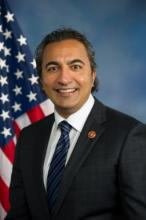Seventy-one-year-old obstetrician-gynecologist Josefina Domingo has practiced in the small New York town of Lowville for 40 years. While she loves her patients, she has often considered retiring and even attempted it – twice. But each time, the lack of ob.gyn. successors drew her back to her patients.
"Through the years, it’s been very tough to get someone to stay here permanently," she said. "This is a very small county. Malpractice insurance is very high. Besides difficulty in recruiting, [getting] recruits to stay [has been] difficult. Even in a small town, lawsuits are here to stay."
Similar scenarios are playing out in small and large cities across the country as the legal climate for ob.gyns. continues to worsen. Medical liability premiums for ob.gyns. remain the highest of all specialties, with enormous settlements and multimillion dollar jury verdicts the norm in some areas.
According to a 2012 survey of 9,000 practicing ob.gyns. by the American Congress of Obstetricians and Gynecologists, 77% of ob.gyns. have had at least one professional liability claim during their career, with an average of 2.6 claims per ob.gyn. The 2012 survey showed that more than half of ob.gyns. made changes to their practice as a result of the high cost or availability of liability insurance. Of those physicians, 15% increased the number of cesarean deliveries, 13.5% stopped performing vaginal birth after cesarean delivery, 8% decreased the total number of deliveries, and 5% stopped practicing obstetrics altogether.
"Ob.gyns. continue to significantly limit their services and change how and where they practice due to the unreasonably high risk of litigation in our profession," ACOG immediate past president James T. Breeden said in a statement. "As millions more women begin to access health care under the Affordable Care Act, it is imperative that Congress pass meaningful medical liability reform."
In Dr. Domingo’s case, high malpractice premiums and the area’s rural environment have long contributed to recruiting challenges for Lowville and its surrounding areas, she said in an interview. Dr. Domingo moved to Lowville in 1974 after being recruited by a local private practice ob.gyn. When he retired, she spent 3 years as the only ob-gyn in the county.
"For 3 years, I was by myself," said Dr. Domingo. "It was terrible. There were no other obstetricians I could relate to. If I had to [perform] a C-section, I had to get a surgeon to help. There was no one to brainstorm with."
As time passed, other ob.gyns. came and went, each spending just a few years in Lowville. When Dr. Domingo attempted to retire for a second time in 2003, one other ob.gyn. in the county remained. A year later, an administrator at the local hospital asked if she would return. She is now employed by Lewis County General Hospital.
"They couldn’t recruit anybody [else]," she said. "I was supposed to come back and stay for 2 years. It’s been 9 years and I’m still here."
Smaller towns are not the only areas struggling to retain ob.gyns. because of poor legal climates. Philadelphia, for instance, has only two remaining private practice ob.gyns. and six hospital maternity units. Rampant lawsuits and exorbitant insurance premiums have forced most physicians to abandon their practices, said Dr. Owen Montgomery, chair of the obstetrics and gynecology department at Drexel University, Philadelphia. The only maternity programs remaining are located at teaching institutions or hospitals.
"Philadelphia is the epicenter of the medical liability crisis," Dr. Montgomery said in an interview. "Private practice is now gone. Ninety-nine percent of all practicing ob.gyns. in Philadelphia are now employed by one of the six remaining maternity programs.
Additionally, insurers that once operated in the city have dropped all ob.gyns. from their policies. Practicing ob.gyns. or their employers must now be self-insured. This means creating your own company and developing reserves for rainy days, Dr. Montgomery said. It also means confronting significant risks if large legal awards are ever levied.
"There’s very real concern on the part of the university that a $40 million judgment against the hospital could impact university management ... research or endowments," he said.
Physicians and legal experts say in order to mitigate the bleak legal landscape for ob.gyns, stronger tort reforms are needed at the state and federal levels. One such initiative under evaluation is the Saving Lives, Saving Costs Act (H.R. 4106), a medical malpractice safe harbor bill recently proposed to Congress. The house bill would create a system to reduce lawsuits against Medicare and Medicaid providers and allow doctors to request that state suits be moved to federal court. Under the act, professional associations would develop clinical practice guidelines that could protect physicians who are sued. Doctor defendants could argue they followed proper practice standards, which would suspend the legal proceedings while a medical review panel investigated the case. The bill in March was referred to the Subcommittee on the Constitution and Civil Justice for review.


